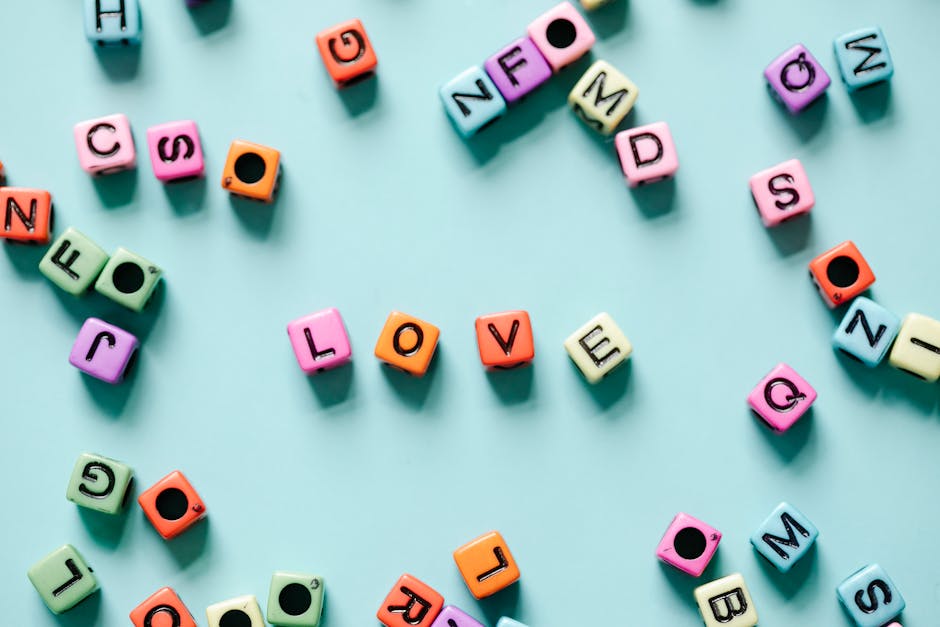
Welcome, fellow design enthusiasts and typography aficionados! Today, we are diving into the captivating world of logo design, where words take center stage and letters become the ultimate storytellers. Get ready to embark on a whimsical journey as we unravel the magic of crafting narrative through the art of typography. So grab your favorite pen (or keyboard) and let’s explore how the power of words can truly elevate a brand’s identity!
Understanding Typography in Logo Design
When it comes to typography in logo design, it’s not just about picking a fancy font and calling it a day. Typography plays a crucial role in conveying the brand’s personality and message. Let’s dive into the world of fonts and letters, shall we?
First things first, understanding the different types of fonts is key. From the classic and timeless serif fonts to the modern and sleek sans-serif fonts, each has its own vibe and personality. Think of it like choosing an outfit for your brand – you wouldn’t wear a tuxedo to a beach party, right? So, make sure your font choice aligns with what your brand stands for.
Next, consider the spacing and sizing of your typography. A cramped or too-small font can make your logo look cluttered and unreadable. On the other hand, a font that’s too spaced out can make your logo look like it’s shouting at you. Finding the right balance is crucial for creating a harmonious design that captures attention without overwhelming the viewer.
And let’s not forget about the importance of consistency. Using different fonts or sizes haphazardly can make your logo look like a jumbled mess. Stick to one or two fonts that complement each other, and make sure they are used consistently across all brand materials. Remember, a well-executed typography can make or break your logo design, so choose wisely!
Exploring the Relationship Between Fonts and Brand Identity
When it comes to branding, fonts play a crucial role in conveying a brand’s personality and message. Imagine if Nike used Comic Sans as their official font – it just wouldn’t have the same impact, would it?
Choosing the right font can truly make or break a brand’s identity. Here are a few ways fonts can influence brand perception:
- Personality: Fonts have personalities too – from sleek and modern to traditional and sophisticated. Your choice of font can help you communicate your brand’s values and voice.
- Consistency: Using the same font across all branding materials helps create a cohesive and recognizable identity. Think of Coca-Cola’s iconic script font - it’s instantly recognizable.
- Legibility: No one wants to strain their eyes trying to read a brand message. Choosing a legible font is key to making sure your audience can easily digest your content.
So, when it comes to selecting the perfect font for your brand, remember: it’s not just about how it looks, but how it makes your audience feel. After all, the right font can make your brand stand out in a sea of competition, while the wrong one can leave your audience feeling more confused than a cat trying to herd sheep.

Crafting a Compelling Narrative Through Typography Choices
When it comes to , the possibilities are endless. Choosing the right font can make or break your story—just like choosing the right outfit can make or break a first date. So, let’s dive into the wonderful world of typography and explore how you can use it to captivate your audience and keep them on the edge of their seats.
**Forget About Times New Roman:** Let’s face it, Times New Roman is the font equivalent of wearing sweatpants to a fancy dinner party. It’s boring, it’s outdated, and it’s not going to impress anyone. Instead, opt for something with a bit more pizzazz—maybe a sleek sans-serif like Arial or a classy serif like Georgia. Experiment with different fonts until you find the one that speaks to you and enhances your story.
**Size Matters:** Just like Goldilocks searching for the perfect bowl of porridge, you need to find the font size that’s just right. Too big and it’s like shouting at your readers, too small and they’ll strain their eyes trying to decipher your words. Strike a balance that is easy on the eyes and draws attention to the most important parts of your narrative.
**Contrast is Key:** Playing around with contrast can add depth and dimension to your story. Mix and match different font weights and styles to create visual interest and highlight key points. A bold headline paired with a delicate script font can create a visually appealing contrast that draws the reader in and keeps them engaged throughout your narrative.
In the end, typography is like the seasoning to your story—it enhances the flavor and makes it more enjoyable to consume. So, have fun experimenting with different fonts, sizes, and styles to create a narrative that is as visually captivating as it is engaging.
The Role of Typeface in Communicating Brand Values
When it comes to communicating brand values, the typeface you choose can make a big difference. Helvetica, with its clean lines and modern appeal, says “we’re sleek and sophisticated.” On the other hand, a font like Comic Sans might scream “we don’t take ourselves too seriously.”
Think about the message you want to send with your typeface. Are you a fun and quirky brand? Maybe a playful script font like Brush Script is the way to go. Are you a serious and professional company? Stick to classic serif fonts like Times New Roman or Garamond.
Remember, consistency is key when it comes to branding. Make sure your typeface matches the tone of your brand across all platforms, from your website to your marketing materials. And don’t be afraid to think outside the box – sometimes a unique and unexpected font choice can set you apart from the competition.
So next time you’re deciding on a typeface for your brand, think about the message you want to convey. Because in the world of branding, sometimes it’s not just what you say, but how you say it.

Utilizing Typography to Evoke Emotions and Tell a Story in Logo Design
Typography is not just about choosing a font for your logo design. It’s about bringing your brand to life, evoking emotions, and telling a compelling story. With the right typography, you can make your logo stand out and leave a lasting impression on your audience.
When selecting typography for your logo design, consider the different emotions that different fonts can evoke. For example, using a bold and sans-serif font can convey power and strength, while a script font can evoke elegance and sophistication. By choosing the right typography, you can create a logo that not only looks good but also communicates the personality and values of your brand.
In logo design, typography can also be used to tell a story. By combining different fonts, colors, and sizes, you can create a visual narrative that captures the essence of your brand. Whether you want to convey a sense of tradition and heritage or innovation and modernity, typography can help you communicate your brand’s story in a memorable and impactful way.
So next time you’re designing a logo, don’t just settle for any old font. Take the time to experiment with different typographic elements and see how they can help you evoke emotions and tell a compelling story. Remember, typography is not just a tool for communication – it’s a powerful tool for creating a lasting connection with your audience.
Incorporating Texture and Style in Typography-Based Logos
When it comes to typography-based logos, adding texture and style can really take your design to the next level. Here are some fun and quirky ways to incorporate these elements into your logo:
1. Play with different font styles - Mix and match different fonts to create a dynamic and eye-catching logo. Play around with bold, italic, and script fonts to add variety and interest to your design.
2. Experiment with colors - Don’t be afraid to get colorful! Adding vibrant hues to your typography can make your logo pop and stand out from the competition. Mix and match different color palettes until you find the perfect combination that speaks to your brand.
3. Incorporate texture – Adding texture to your typography can give your logo a unique and tactile feel. Consider using textures like watercolor, wood grain, or metallics to add depth and dimension to your design. Just be sure not to go overboard – a little texture goes a long way!
4. Think outside the box – Get creative with your typography by experimenting with unconventional layouts and shapes. Play with negative space, overlapping letters, and unique alignments to create a logo that is as visually interesting as it is memorable.
FAQs
What is the role of typography in logo design?
Typography plays a crucial role in logo design as it helps convey the brand’s personality, message, and values. The right font can make or break a logo design, so choosing the perfect typography is key.
How can typography be used to create a compelling narrative in logo design?
Typography can be used to tell a story and create a connection with the audience. By choosing the right fonts, colors, and layouts, designers can evoke certain emotions and associations that help craft a compelling narrative for the brand.
What are some popular typography trends in logo design?
Some popular typography trends in logo design include minimalist sans-serif fonts, vintage-inspired lettering, and hand-lettered scripts. These trends can help logos stand out and make a lasting impression on consumers.
How can typography be customized to fit a specific brand’s identity?
Typography can be customized by adjusting letter spacing, line height, and font weight to fit a specific brand’s identity. By tailoring the typography to reflect the brand’s personality, designers can create a unique and memorable logo.
What are the common mistakes to avoid when using typography in logo design?
Common mistakes to avoid when using typography in logo design include using too many fonts, choosing illegible fonts, and neglecting the importance of kerning and spacing. By being mindful of these pitfalls, designers can create more effective and impactful logos.
In Conclusion: Let Your Fonts Speak Volumes!
So there you have it, folks! The secret to crafting a compelling logo design through typography is to let your fonts do the talking. Whether it’s bold and expressive or sleek and sophisticated, the right typography can communicate your brand’s narrative with just a few strokes.
So the next time you’re working on a logo design, don’t be afraid to play around with different fonts and styles. Let your creativity run wild and watch as your logo comes to life with the power of typography. Who knew that a few little letters could speak volumes about your brand?
Remember, when it comes to logo design, the message is in the font!











